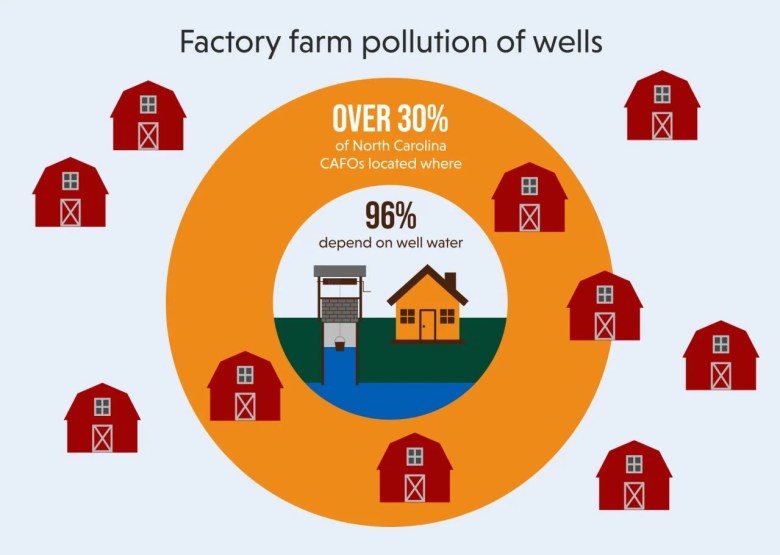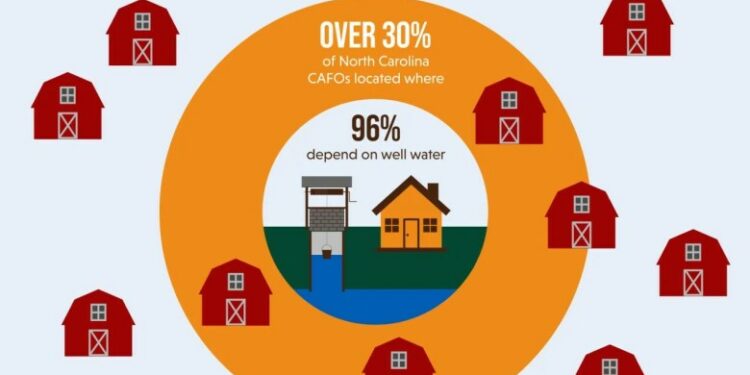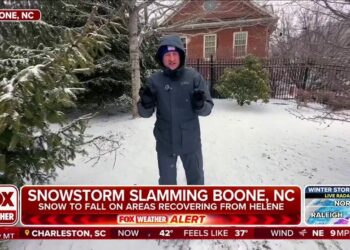By Will Atwater
The Northern Red Cardinal has worn the crown as North Carolina’s official bird for eight decades, but judging by the numbers in a new report, another bird is king.
In 2022 state poultry operations “housed”nearly 357 million chickens and turkeys, up from 250 million in 2007, according to data provided by the Environmental Working Group, an organization that does research to promote healthy living and healthy environments. The numbers reflect a 43 percent average increase across the state, solidifying broilers — chickens raised for meat production — and turkeys as the state’s top birds, economically speaking.
The organization used machine learning, a type of artificial intelligence, to analyze U.S. Department of Agriculture aerial imagery of poultry houses, the report states.
“We are a big animal agriculture state ranking very highly in turkeys, chickens and pork production,” said Steve Troxler, North Carolina agriculture commissioner, during an interview in August. He told a group of farmers gathered to discuss the threat of bird flu that North Carolina was now No. 1 in the country for overall poultry receipts.
North Carolina’s agricultural industry has become an economic juggernaut. The state’s farm cash receipts for 2022 totaled more than $16 billion, according to USDA data. Of that amount, livestock, dairy and poultry sales accounted for 74.3 percent of the receipts. Nationally, the state ranks fourth in broiler production, which contributed to the state’s $111 billion agricultural and agribusiness portfolio.
But there’s another side to this story.
“More than half of all new poultry appeared in just four counties out of 100,” said Al Rabine, a GIS analyst with the Environmental Working Group and co-author of the report. “The rapid growth of the industry there, and the resulting dense concentration of poultry operations, should raise alarm bells about residents’ health, drinking water and air quality.
As the state’s poultry production average rose, the Environmental Working Group reported that four counties experienced a 98 percent increase during that same period. Three of them—Sampson, Duplin, and Robeson—are in eastern North Carolina, which is also the center of the state’s hog industry.
The report also states that nearly 10 million hogs “were housed on factory farms in 2022.” This data is unwelcome news for those who live, worship and learn in homes, churches and schools near hog and poultry farms, which pose threats to the environment and human health.
Adverse effects
The poultry operations impact “air quality, water quality, land quality, in the communities that are having to deal with all this,” said Jeff Currie, the Lumber Riverkeeper. Part of that river runs through Robeson County and has been impaired by contaminants discharged in the river by industrial facilities.
“It’s kind of the same old story,” said Sherri White-Williamson, executive director of the Environmental Justice Community Action Network, a Sampson County-based environmental advocacy group. “The counties that are already overburdened with concentrated agricultural feeding operations and all the pollution and health issues associated with it just keep getting more.”
White-Williamson said people in these communities are exposed to air filled with particulate matter from periodic spraying of animal waste on agricultural fields and are likely to have contaminated drinking water wells. She added, “It’s discouraging, depressing [and] very concerning for the health of folks.”
 Credit: Environmental Working Group
Credit: Environmental Working Group
“The Department of Agriculture doesn’t have to share any information regarding the poultry industry as a whole,” Baldwin said. “We can go to the Department of Water Resources and say, ‘Give me a printout of every hog facility in your jurisdiction,’ and they’ll print out a fairly large stack of papers that gives you the owner’s name, the permit name and the address.”
Baldwin said you can make the same request for a poultry operation, “which the Department of Agriculture regulates, and they’ll tell you, basically, ‘Go pound sand. We don’t have to. It’s proprietary information.’”
Cape Fear Riverkeeper Kemp Burdette believes the answer to why the state’s poultry industry remains in the shadows is related to hogs.
“I think the poultry industry looked and said, ‘What can we learn from the swine industry that would help us evade oversight and evade regulatory impacts and evade community complaints?’” he said.
“One thing they figured out is that ‘If we can completely shroud this industry in secrecy, then it’s going to be harder for folks with concerns about environmental impacts, or about public health to […] make a case for more oversight.’” He added, “If we can’t make that case because the data isn’t public, then that’s just one more hurdle we have to clear.”
Stalled momentum
In 2023, inspired, in part, by Big Poultry in North Carolina, an investigative series in the News & Observer that looked at North Carolina’s poultry industry, Rep. Pricey Harrison (D-Guildford) cosponsored HB722.
“My bill was more of a study directed at the Environmental Review Commission to get foundational support for a potential regulatory regime.” She added, “The News and Observer and the Charlotte Observer’s reporting was pretty significant. It showed […] discharges and air quality problems, the lack of notification, the secrecy and confidentiality of records. There were all these areas that could use some improvement and improve the lives of the neighbors of those poultry farms.”
On April 23, 2023, the bill was referred to the Committee on Rules, Calendar, and Operations of the House, where it has never received a hearing.
When asked what it will take to move the needle on regulatory reform for the poultry industry, Harrison offered a cautionary response.
“The secrecy, confidentiality and the nondisclosure is just a little bit shameful to me. It’s not fair, and that’s what I find unsupportable — and indefensible. [The industry] doesn’t want any constraints […], and they’ve operated without them so far. Why would they succumb to constraints unless they get pressure from the leadership? I don’t think they’re gonna get pressure from the leadership until we have a crisis.”
Republish This Story
![]()
Republish our articles for free, online or in print, under a Creative Commons license.
Source link : http://www.bing.com/news/apiclick.aspx?ref=FexRss&aid=&tid=66ebef1a0b034a8db52eea8824842e9c&url=https%3A%2F%2Fwww.northcarolinahealthnews.org%2F2024%2F09%2F19%2Fnorth-carolinas-poultry-industry-surges-but-at-what-cost-to-health-and-environment%2F&c=11147169064628931430&mkt=en-us
Author :
Publish date : 2024-09-18 21:30:00
Copyright for syndicated content belongs to the linked Source.







